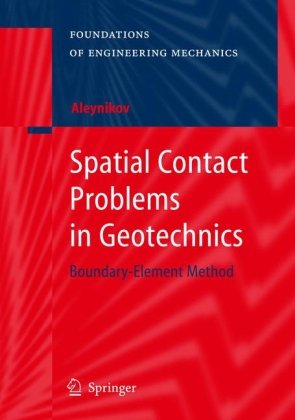

Most ebook files are in PDF format, so you can easily read them using various software such as Foxit Reader or directly on the Google Chrome browser.
Some ebook files are released by publishers in other formats such as .awz, .mobi, .epub, .fb2, etc. You may need to install specific software to read these formats on mobile/PC, such as Calibre.
Please read the tutorial at this link: https://ebookbell.com/faq
We offer FREE conversion to the popular formats you request; however, this may take some time. Therefore, right after payment, please email us, and we will try to provide the service as quickly as possible.
For some exceptional file formats or broken links (if any), please refrain from opening any disputes. Instead, email us first, and we will try to assist within a maximum of 6 hours.
EbookBell Team

5.0
48 reviewsThe book presents a systematic approach to the numeric solution of a broad class of spatial contact problem in geotechnics. New techniques and efficient computing algorithms are considered on the basis of the boundary element method – a modern method of structural mechanics and theory of elasticity. Their practical application enables complex-shaped foundations to be designed with high reliability, under spatial loads. Much attention is paid to the formulation and analysis of spatial contact models for elastic bases. Along with classical schemes of contact deformation, new contact models are discussed for spatially nonhomogeneous and nonlinearly elastic media, adequately describing the soil properties. The boundary element method was effectively implemented in an originally developed Rostwerk software. The boundary element solutions are compared with the known experimental data as well as with solutions of similar problems by means of other methods and engineering approaches.
The proposed boundary element method for solving spatial contact problems is applied to demonstrate the possibility for developing new foundation constructions. A new procedure is described for the determination of the soil deformation modulus, developed from the solution of a contact problem for impression of a conical indenter into an elastic half-space.
All the topics under consideration are accompanied by extensive calculation data. The original results are complemented by a detailed review of the world literature.
This work is intended for the audience of research workers, design engineers, post-graduate students, undergraduates specializing in structural mechanics, theory of elasticity and geotechnics.